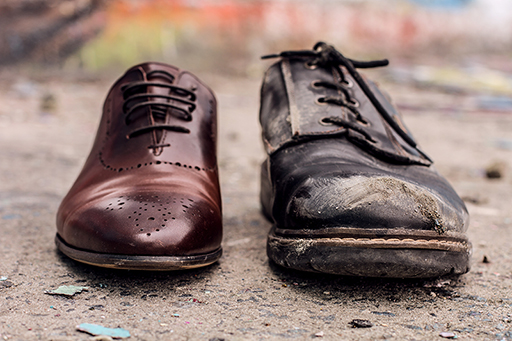2 Privilege
In Week 2 you looked at the concept of white privilege, but here you’ll explore the broader definition and see that it can be applied wherever there is a dominant group whose needs have traditionally been prioritised.
Malone (2021 p60) describes privilege as
‘Any and all unearned benefit, right or advantage an individual receives in society by nature of their identities, race, wealth and other characteristics.’
Watch this short film from BuzzFeed to see privilege demonstrated in a more visual way:
A key point is that privilege doesn’t mean that you are immune to the challenges and hardships in life, it just means that the nature of your identity gives you advantages, often without you even realising.
Bias and privilege are closely linked. In the closing advice in her book, ‘Demanding More’ Atcheson (2021, p. 212) says:
Bias plays hand in hand with privilege and it’s important to acknowledge this every day. This means taking more time on decision making, and spending time and headspace on really thinking about why you’re making a decision, who it affects and whether it affects different groups of people disproportionately.
Hive learning (no date) describes 5 main types of privilege and points out that most of us are privileged in at least one way:
- White privilege – benefits white people at the expense of people of colour, e.g. doing well in a challenging situation without being called a credit to your race
- Religious privilege – includes being able to find a place of worship near you and feeling a sense of connection between your religious celebrations and wider society, e.g. automatically having a day off from work for your religious holidays
- Gender privilege – usually refers to male privilege, a set of privileges distributed to men on the basis of their gender, e.g. being treated more respectfully and listened to more in everyday conversations
- Heterosexual privilege – describes the advantages granted to someone because of their heterosexual orientation, e.g. not having to fear that your co-workers will find out about your sexual orientation and that their knowing will have negative consequences
- Socio-economic privilege – having enough resources to be able to take on the opportunities that life has given you, e.g. unpaid internships.
Of course, there are many other examples, including able-bodied privilege, birthplace privilege or location-based privilege.
Privilege is not something to be embarrassed or ashamed of, but it is something to recognise. Ferguson (2022) explains that ‘understanding privilege is a step towards empathy and helps to build a more inclusive culture.’ She goes on to suggest some next steps to ‘destigmatise privilege and unlock its potential instead’:
- focus on the future – use your advantages to advocate for equity and inclusion across your organisation and community
- if you have overcome significant obstacles – use that experience to inspire others to be empathetic leaders
- stay focused on action and behaviour change, not just understanding and awareness
- invest your time in volunteering or mentoring
- support culturally diverse businesses
- offer internships
- invest in start-ups headed by under-represented founders.
Microagressions are some of the outward manifestations of bias and privilege, and you’ll learn more about those in the next section.

